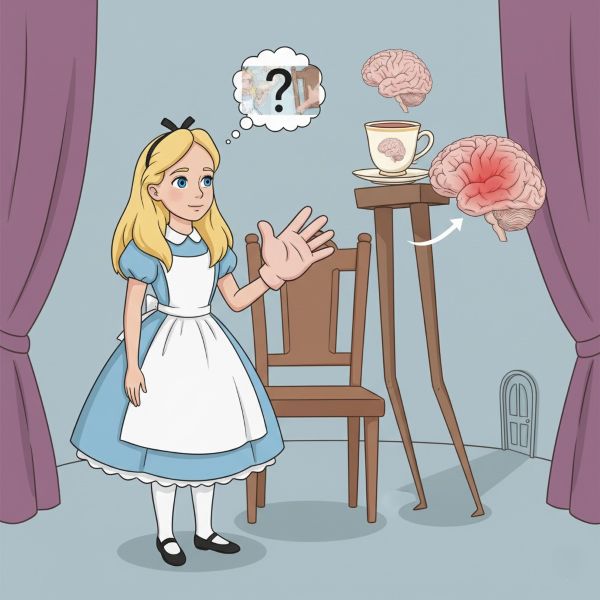"Alice in Wonderland" Syndrome
Definition and Clinical Features
"Alice in Wonderland" syndrome (AIWS) is a perceptual disorder characterized by distortions of body image, known as somatognosias. Patients may feel that parts of their body, or their entire body, are shrinking (microsomatognosia) or enlarging (macrosomatognosia). The syndrome can also include visual distortions of external objects, such as metamorphopsia (distortions of shape), micropsia (objects appearing smaller), or macropsia (objects appearing larger).

The syndrome is named after Lewis Carroll's descriptions of Alice's bizarre changes in body size, famously illustrated by Sir John Tenniel.
History and Etymology
The name "Alice in Wonderland" syndrome was coined by English psychiatrist John Todd in 1955. He used the name to describe the strange perceptual phenomena of altered body image, which had first been described in the context of migraine by Lippman some years earlier.
It has been suggested that Charles Lutwidge Dodgson’s own experience with migraine may have inspired his descriptions as Lewis Carroll in Alice’s Adventures in Wonderland (1865). However, this is debated; some challenge this idea on chronological grounds, finding no evidence of migraine in Dodgson's diaries until after the books were written. Furthermore, his diaries do not contain reports of body image hallucinations that would be typical of the syndrome.
Associated Conditions
The perceptual distortions of AIWS are most famously associated with the aura phase of migraine headaches. However, a number of other conditions can also give rise to these phenomena, including:
- Epilepsy (particularly temporal lobe seizures)
- Encephalitis (especially from Epstein-Barr virus)
- Cerebral mass lesions (tumors)
- Schizophrenia
- Drug intoxication
References
Larner AJ. The neurology of "Alice." Advances in Clinical Neuroscience & Rehabilitation 2005; 4(6): 35-36
Todd J. The syndrome of Alice in Wonderland. Canadian Medical Association Journal 1955; 73: 701-704
Cross References

